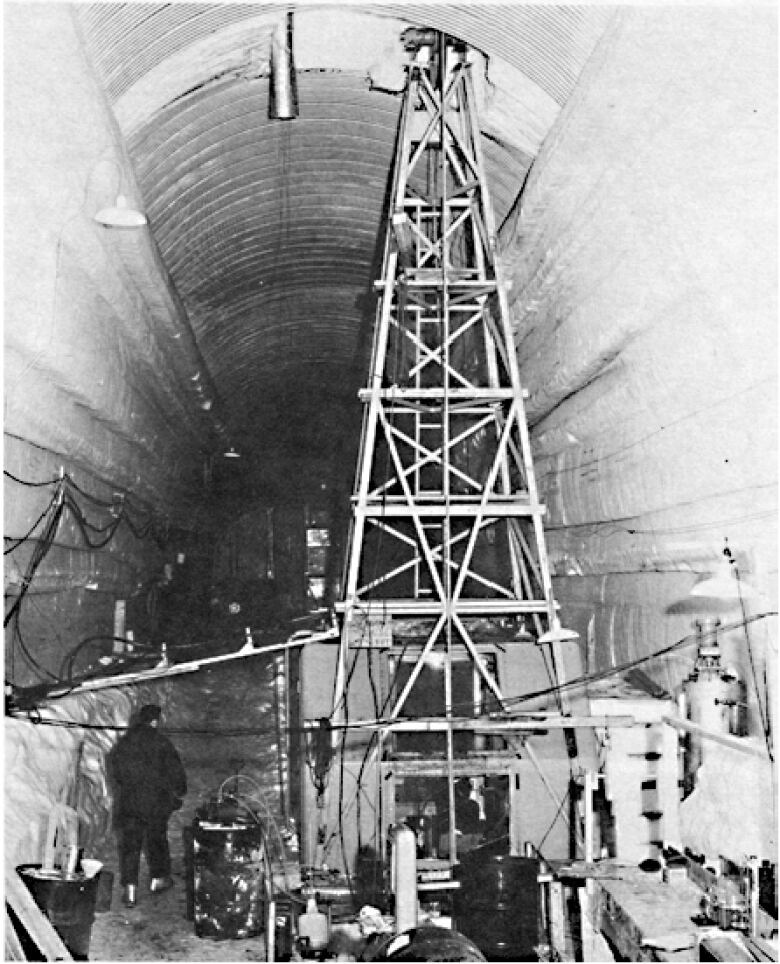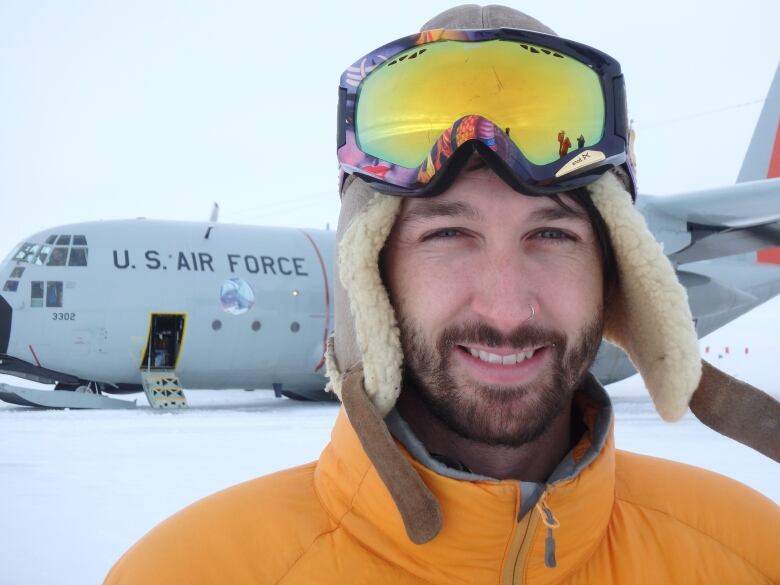Climate change could expose Cold War-era Arctic military base
Long-buried hazardous waste at Greenland site may be uncovered by the end of the century or sooner

The hazardous waste of aCold War-era military base once thought to be buried forever in the Greenland ice sheet may eventually resurface due to climate change, says a new York University study.
Camp Century was a U.S. military base built within the Greenland ice sheet in 1959. The top-secret site was used for testing the feasibility of deploying nuclear missiles from the Arctic.
The site is only 400 kilometres away from the Canadian Arctic.

In 1967, when the camp was decommissioned, its infrastructure and waste were abandoned because it was believedthey would be buried forever under perpetual snowfall.
"It's a new kind of climate change challenge," said William Colgan, a climate and glacier scientist at York University and the study'slead author.
Thestudy, published Thursday in Geophysical Research Letters, a journal of the American Geophysical Union, offers insight on what may happen to numerous other abandoned military installations in the Arctic as the climate changes.
According toColgan,the ice sheet covering the military base will start to melt by the end of the century or sooner.
-
Melting Greenland ice changing ocean circulation, Earth's gravitational field
-
Arctic heat waves cause exceptional Greenland melt, says new study
-
IN DEPTH INew report outlines climate change challenges on Canada's Arctic coast
"Eighty-five years until it starts to melt out definitely is a long ways away, but if we've learned anything from our climate modelling over the last 20 years it's that we generally underestimate the speed and rapidity of climate change," Colgan said.

Asice melts due to climate change, the camp's infrastructure, as well as any lingering biological, chemical and radioactive waste, could re-enter the environment and potentially disrupt nearby ecosystems.
Camp Century
Today Camp Century is totally buried under six decades of snow.The only landmark that distinguishes the site is a lonely weather station continuing to gather meteorological data.
But under the pancake-flat sheets of snow and ice lies a military base that was a bustling site during the Cold War.
In its heyday, the site included a largeski-wayand surface entrances to tunnels that carvedkilometres of paths into the underground facility, which stretched over 55 hectares.
The base was like a small town made of prefabricated modular buildings inside the tunnels and includedliving quarters, a dining hall, a recreation facility and even a small hospital.
Camp Century also housed a nuclear generating plant, backup diesel generators, research facilities and storage for vehicles that would drive from site to site underground.
The most striking element of the camp was a test underground railway that stretched about a half a kilometre.
"They were testing the concept of deploying nuclear missiles beneath the ice sheet on railway," Colgan said.

Low-level nuclear waste
Colgan and his team took an inventory of the wastes at Camp Century and ran climate model simulations.
Thewaste at Camp Century covers 55 hectares, roughly the size of 100 football fields.The site contains an estimated 200,000 litres of diesel fuel, enough for a car to circle the globe 80 times, and 240,000 litres of wastewater, including sewage.
Colgan addedan unknown volume of low-level radioactive coolant from the nuclear generator is also present at the camp.
"It's very low-level nuclear waste, it's not like old fuel rods or warheads, it's just the coolant that was used in the nuclear reactor."

There is little risk associated with this nuclear waste from the camp, Colgan said. However, he saidmuch of the building materials used in the Arctic at the time contained polychlorinated biphenyls (PCBs), pollutants toxic to human health.
Theyare likelya bigger threat to the Arctic ecosystem, he said.
"They are very long-lived, they disperse easily and they bio-accumulate easily and there's a lot of research showing that PCBs are quite harmful."
When the ice melts, pollutants in Camp Century couldmake their way to the ocean and disrupt marine ecosystems, Colgan said.
It'sunclear which country would beresponsible for the cleanup.
"It's a sticky problem," Colgansaid."It could take several decades to figure out who actually owns the waste."












_(720p).jpg)


 OFFICIAL HD MUSIC VIDEO.jpg)
.jpg)



























































































